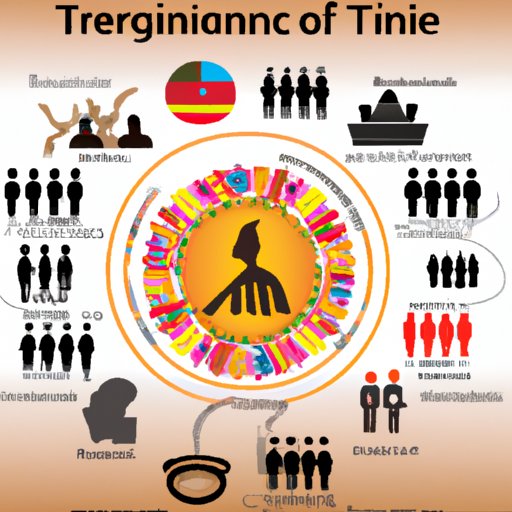Introduction
Indigenous tribes are ethnic groups that have inhabited a particular region for a long period of time. They often share a common language, culture, and history. In recent years, many national governments have begun to recognize the distinct identity of these communities and have developed policies to protect them and their rights. As part of this process, they have sought to group indigenous tribes into larger units, often referred to as “national tribes”.
Examining How National Governments Group Indigenous Tribes
The way in which national governments group indigenous tribes can vary significantly from one nation to another. Generally speaking, however, there are three main types of tribal groupings. The first type is based on a shared language, culture, or history. This type of grouping seeks to unite tribes that share a common identity and to promote the preservation of that identity. The second type of grouping is based on geographical proximity. This type of grouping seeks to unite tribes that live in close physical proximity, allowing them to more easily interact and benefit from each other’s resources. Finally, some nations may choose to group tribes based on their political or economic status. This type of grouping seeks to ensure that all tribes receive equal access to resources and opportunities, regardless of their individual circumstances.
The impact of these tribal groupings on indigenous cultures can be both positive and negative. On the one hand, grouping tribes together can help to preserve their unique identities and cultures by allowing them to more easily share knowledge and resources. On the other hand, it can also lead to the erosion of traditional customs and beliefs as tribes are forced to conform to a single set of standards. Additionally, it can create divisions within a community, as different tribes may have conflicting interests or goals.

Exploring the Benefits and Challenges of Tribal Groupings
When examining the benefits and challenges of tribal groupings, it is important to consider the political implications of such groupings. In many cases, tribal groupings are used by national governments as a tool to control and manipulate indigenous populations. By grouping tribes into larger units, governments can more easily limit the autonomy of individual tribes and impose their own policies and regulations. Additionally, tribal groupings can be used to divide and conquer, creating internal conflict between tribes and thus preventing them from uniting against oppressive government policies.
In addition to the political implications of tribal groupings, it is also important to consider the role of international organizations in such groupings. Many international organizations, such as the United Nations, have sought to promote the rights and interests of indigenous peoples. However, they have also been accused of using tribal groupings as a means of controlling and manipulating indigenous populations. For example, some have argued that international organizations have used tribal groupings to limit the autonomy of individual tribes and to prevent them from uniting against oppressive government policies.
Conclusion
In conclusion, this article has examined how most indigenous tribes are grouped in national governments. It has explored the different types of tribal groupings, their impact on indigenous culture, and the political implications of such groupings. It has also investigated the role of international organizations in indigenous tribe groupings. Overall, it is clear that tribal groupings can have both positive and negative impacts on indigenous cultures. Therefore, it is essential that any tribal groupings are done in a manner that respects the rights and interests of indigenous peoples.


